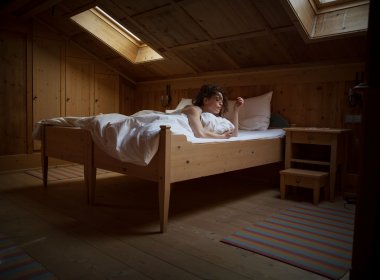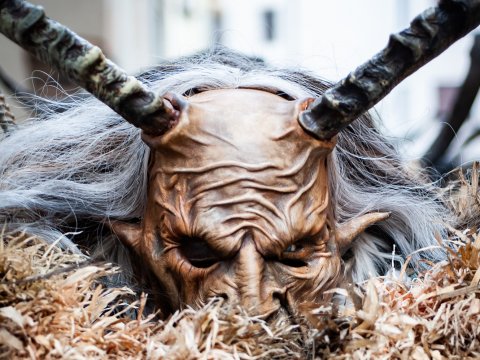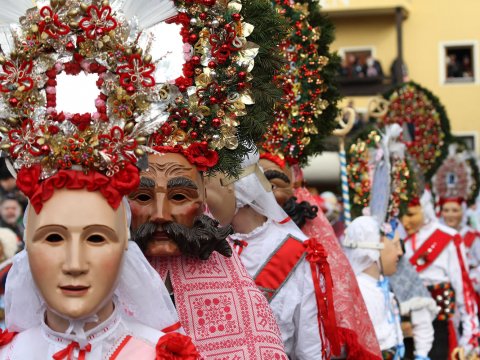The “Black Men Church” in Innsbruck: Max and the „Black Women“
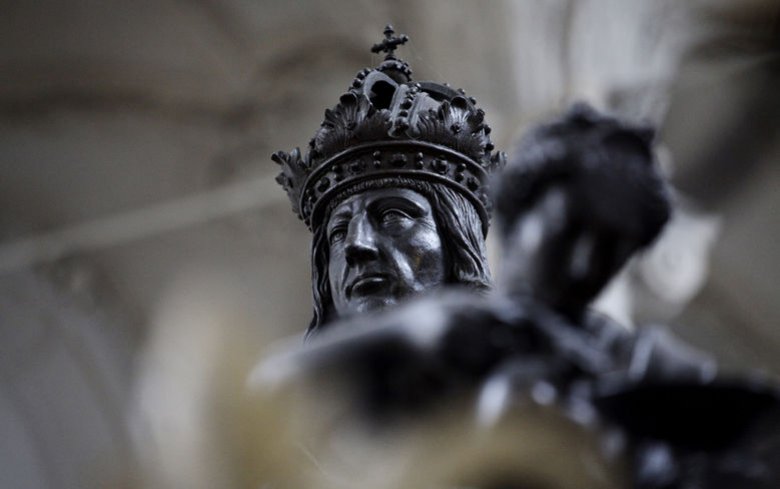
Upon the end of his life, Emperor Maximilian I (1459 – 1519) was obsessed with death. He envisioned a grand tomb, fit for an Emperor, surrounded by life-size statues of his ancestors, real and mythical, lining his grave in a mock funeral procession. As work on the ornate black marble tomb progressed, it became apparent that it would not fit into the castle chapel in Wiener Neustadt where Maximilian wished to be buried.
His grandson, Ferdinand I, built a church for his grandfather in Innsbruck. The gothic building was named the Hofkirche (Court Church) and it was eventually fitted with a massive marble mausoleum and decorated in kingly riches. Instead of the 40 bronze statues, which were commissioned in the beginning, 28 completed statues line the ornate black marble cenotaph in the center of the nave, forged in black bronze. Known as the “Black Men,” despite including several women, the noted individuals range from famous dukes and duchesses, to Holy Roman Emperors, Queens, and even mythical heroes. Who were these women who are cursed to watch over the empty sarcophagus of Max, and what was their fate?
Elizabeth of Carinthia, Gorizia and Tyrol (1262 – 1313)
Daughter of Count Meinhard II of Gorizia-Tyrol
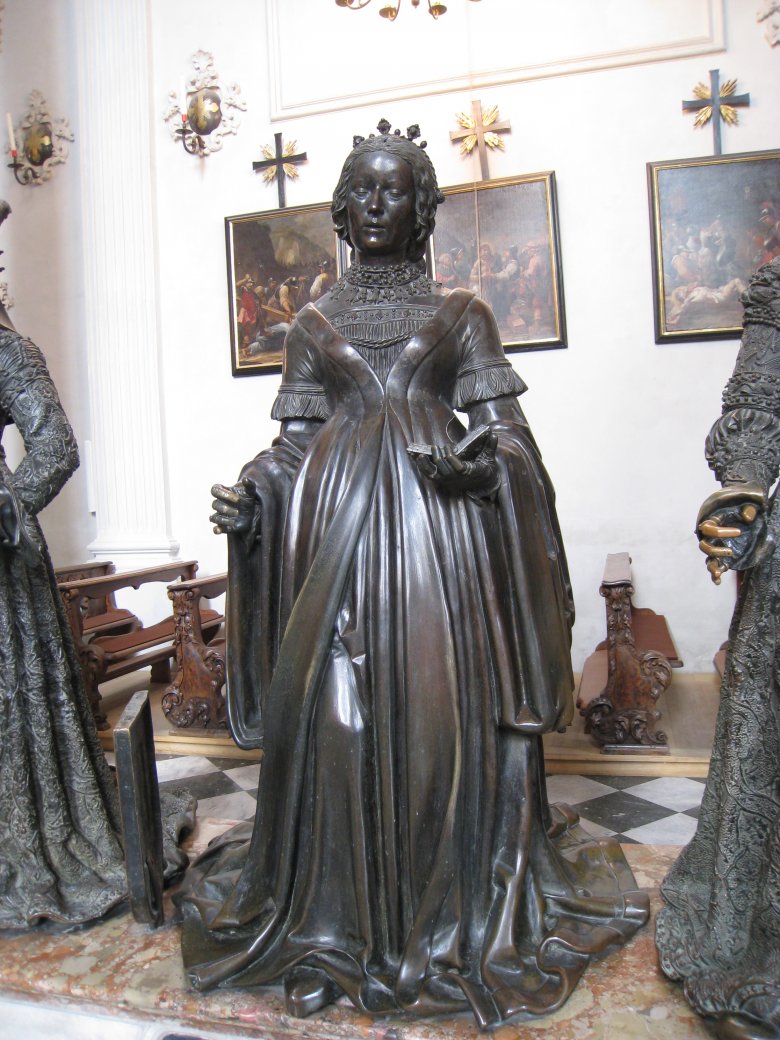
A shrewd and enterprising woman who had some commercial talents, Elizabeth was married to Albrecht I of Habsburg at the age of 15. The construction of the saltworks in Salzkammergut Lake District goes back to her suggestion. In 1299, Elizabeth was crowned Queen of the Romans. Nine years later, her husband was murdered by his nephew and Elizabeth had the Monastery of Königsfelden erected at the site where the murder happened. Elizabeth died in 1313 and was buried next to her husband. The marriage resulted in 21 children (!). How remarkable!
Cymburgis of Masovia (1394 or 1397 – 1429)
Grandmother of Maximilian I

The Polish princess was a beautiful and imposing woman who became Duchess of Austria by her marriage with Habsburg Duke Ernest ‘the Iron’ in 1412. The robust archduchess gave birth to nine children and left more of a mark on history. As the mother of later Emperor Frederick III, Cymburgis became the female ancestor of all later Habsburgs. It has been claimed that she brought the distinctive protruding lower jaw (prognathism) into the family, a particular physical characteristic of most members of the Habsburg Family for many generations, including her grandson Maximilian I. The trait is easily traceable in portraits of Habsburg family members. An extreme example of the „Habsburg Jaw“ was Charles II of Spain. His jaw was so badly deformed that he spoke and ate with difficulty. Tradition has it that Cymburgis was also known for her exceptional strength, which, for example, she showed by driving iron nails into the wall with her bare hands. How respectable!
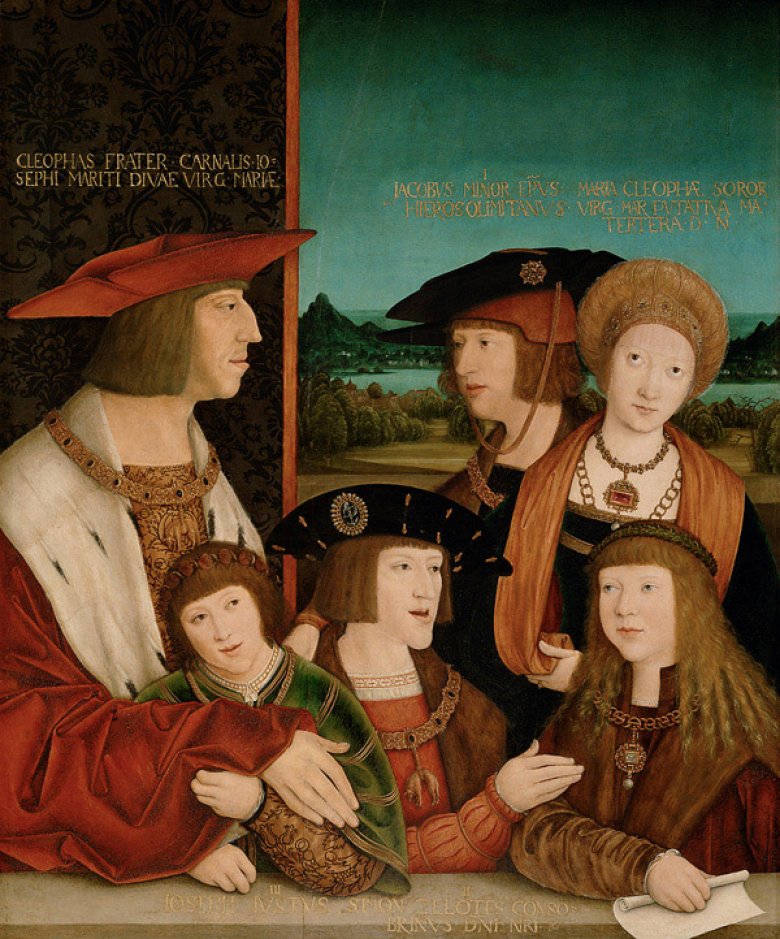
Pictured to the left is Emperor Maximilian I with his family. The „Habsburg Jaw“ is easily traceable in the portrait.
Elizabeth of Luxembourg (1409 – 1442)
The Only Child of Holy Roman Emperor Sigismund, King of Hungary and Bohemia

When Elizabeth was two years old, her father betrothed her to the teenaged Habsburg Duke Albrecht V of Austria. At the age of 13, she married her fiancé, who was then aged 31. As the son-in-law of the last Luxembourg, Albrecht inherited the crowns of Bohemia and Hungary and was elected as Sigismund’s successor on the German throne after his death. Elizabeth consequently became queen of Hungary and of the Holy Roman Empire. Elizabeth gave birth to four children. She was a resolute woman and politically active. After losing a civil war against the king of Poland, she suddenly died at the age of 33. She was rumoured to have been poisoned. How tragic!
Mary of Burgundy (1457 – 1482)
First Wife of Archduke Maximilian of Austria, the future Holy Roman Emperor Maximilian I

Mary was born in Brussels as the only child of Charles the Bold and thus was his heir presumptive. At the age of 20, she became Duchess of Burgundy after the death of her father. To protect the Burgundian territories against her godfather Louis XI, Dauphin of France, Mary soon made her choice among the many suitors for her hand by selecting Archduke Maximilian of Austria, the future Holy Roman Emperor Maximilian I, who became her co-ruler. Maximilian was two years younger and the arranged marriage turned out to be a close and loving union. She gave birth to three children, Philip, Margaret and Francis. Mary loved riding and was hunting with Maximilian when her horse tripped, threw her in a ditch, and then landed on top of her, breaking her back. She died several weeks later at the early age of twenty-five, which is said to have broken Maximilian’s heart. Mary and Maximilian were only married for five years. After Maximilian’s death, his heart was buried in Mary’s grave. A love that continues after death. How romantic!
Bianca Maria Sforza of Milan (1472 – 1510)
Second Wife of Emperor Maximilian I

Orphaned at an early age, she grew up in Milan under the tutelage of her rich uncle, who cared little about her education and allowed her to indulge her own interests. Her uncle arranged her marriage to the King of the Holy Roman Empire, Maximilian I. Maximilian’s motives lay in the bride’s substantial dowry. The first meeting between the couple took place a long time after the wedding, at which Maximilian had been represented by a liegeman. It was impossible for the young bride to win the affection of her husband, who considered her too uneducated, talkative, naive, wasteful with money, and careless. He did wish to have children with her, but all their attempts failed: despite Bianca’s several pregnancies, none produced a living child. The Emperor had a number of mistresses and is said to have had 30 illegitimate children. Bianca was neglected by Max and sometimes even treated in a degrading manner. On several occasions he left her behind as security when he could not pay for his rooms on trips. Having lived the last years of her life in seclusion and isolation, Bianca died of an eating disorder at the age of 38. Her husband did not attend her funeral or even dedicate a gravestone to her. How depressing!
Joanna of Castile, known as “Joanna the Mad” (1479 – 1555)
Daughter-In-Law of Emperor Maximilian I

Joanna was a very beautiful, educated and formally trained yet very withdrawn woman. At the age of fourteen she was betrothed to Philip of Flanders, the Duke of Burgundy and son of the Holy Roman Emperor Maximillian I. From the one moment the two set eyes on each other, it was lust at first sight. Philip lived up to his nickname ‘Philip the Handsome.’ He insisted that the two get married that night so that they could consummate the marriage immediately. The passionate relationship between Joanna and Philip resulted in six children. Her mental imbalance showed itself in the form of extravagant, though justified, jealousy of the unfaithful Philip. Dramatic scenes of jealousy ensued. The shock of Philip’s sudden and early death intensified her melancholia, and her mental health deteriorated. Her love for her husband developed into a mania and she was declared insane and imprisoned in a convent under the orders of her father, Ferdinand II of Aragon. Joanna spent forty-six years imprisoned in the convent before her death at the age of seventy-six. How sad!
Kunigunde of Austria (1465 – 1520)
Daughter of Emperor Frederick III

She grew up in an informal and open atmosphere, without rigid court etiquette. Contrary to former practice, she learned not only to read, write, and embroider, but also received instruction in riding and hunting, astronomy and mathematics. At the age of 15, Kunigunde was sent to the Tyrolean court in Innsbruck with Archduke Sigismund of Austria. In Innsbruck, Kunigunde met Albert IV, then ruler of Bavaria-Munich, whom she married in 1487. Her father had initially given his consent, however, when Albert’s forces occupied the Imperial City of Regensburg, he changed his mind. The couple wed at the Innsbruck Castle Chapel, against the will of Kunigunde’s father. Her brother, the later Emperor Maximilian I, mediated between her and Emperor Frederick and they reconciled eventually. Kunigunde and Albert had six children. After her husband’s death, Kunigunde played an influential role in Bavarian politics and acted in favour of the rights of her two eldest sons. She had a pronounced character and was strong-willed. After being widowed she joined a convent, where she led a model life of virtue, dying at the age of fifty-five in 1520. How brave!
Margaret of Austria (1480 – 1530)
Daughter of Emperor Maximilian I and Mary of Burgundy

Margaret had no luck with men. Before she had reached the age of three, the little girl was promised to Charles, the future King Charles VII of France. She was raised as the future Queen of France at the French court, but her engagement fell through when Charles married another woman. Margaret returned home and Emperor Maximilian I began at once to work on another marriage for her. Margaret was married to the Spanish successor to the throne. However, the marriage did not last long as the sick infant of Spain succumbed to a fever and died after only six months. The young widow returned to the Netherlands and was once again the object of a dynastic union. In 1501, Margaret was married to Philibert II, Duke of Savoy. This extremely happy union was also to be of only brief duration. Three years later, aged only twenty-four, Margaret was again a widow. She had no children, and after Philibert’s death, she refused to marry again. Margaret died of gangrene in 1530. How aggrieved!
The Court Church – Definitely Worth Visiting
I wanted to find out more about the women who guard over the empty tomb of Max, so I decided to visit Court Church again. The amazingly lifelike, yet larger-than-life figures that flank the marble tomb are remarkably detailed in costume and image. And they still look pretty mighty and impressive.

A touch of a particular piece of the bronze statue pictured to the left is said to bring good luck. As it is forbidden to touch the statues, I didn’t rub it for luck it, of course. Although it appears to be a popular occurrence, as it is the only part of the statues burnished a shiny, golden colour from years of handling… ;-)














